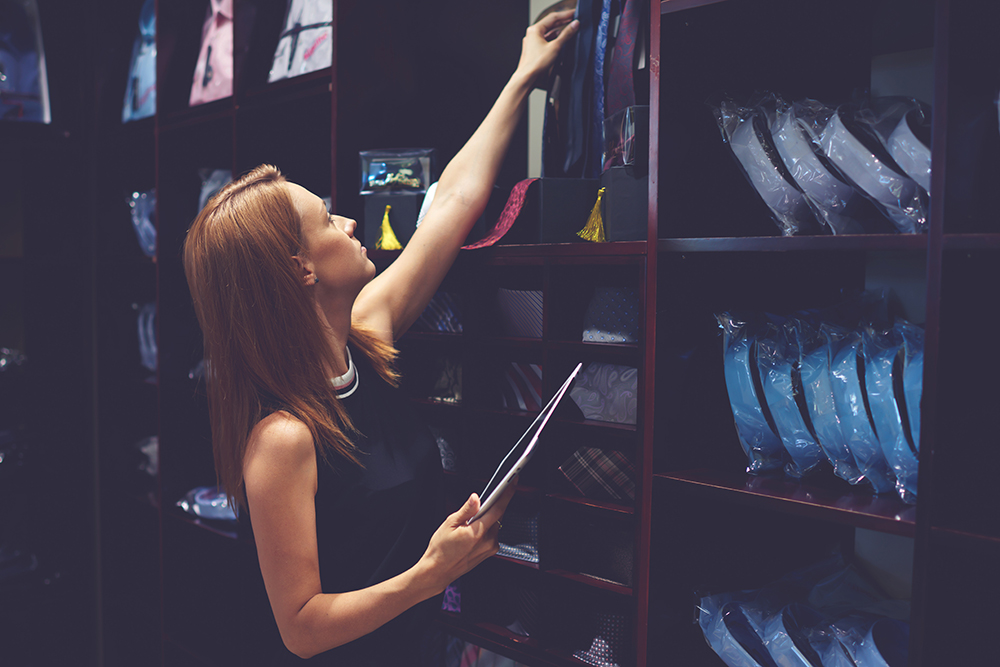The modern sales assistant – technology plus talent

Technology is infiltrating every area of retail. Along the way it’s offering real-world retail a host of benefits in the form of better customer service through the empowerment of sales assistants.
Here’s an insight into how real-world retail is playing to its personalised strength by uniting technology with talent.
The sales assistant
The sales assistant has long been the backbone of any retail environment. Armed with knowledge, attentive to a customer’s needs, and personifying the brand ethos, the sales assistant is the bridge between the consumer and a purchase.
In the age of online retail, the sales assistant’s real-world role is now more important than ever before. No longer is the sales assistant just the person who makes the sale, they are front and centre in the personalised experience that consumers seek out from the bricks and mortar realm.
In fact, a survey by Oracle found in the online era, the sales assistant is increasingly critical, with 88 percent of respondents listing service as important.
They also note this sees retailers “under pressure to empower their store associates and operations to deliver accurate and connected, information-driven interactions at every touch point”.
That empowerment comes through technology that is available right in the palm of their hand in the form of a tablet, offering the ability to personalise the customer experience through mobility, insight, and engagement.
Here are three ways the humble tablet unites technology with talent in the push for better customer service.
Greater mobility – the rise of mPOS
Of all the emerging trends in retail, mobile Point of Sale continues to be the most widely adopted.
Global Market Insights explains mPOS adoption is expected to continue at a compound annual growth rate of 18 per cent over the next six years, with the market set to reach $55 billion by 2024.
Driving that growth is the mobility it offers the sales assistant, allowing them to take the checkout to the consumer anywhere in store.
Capable of taking a variety of payment types, the mPOS is supported by an ever-increasing array of software providers all looking to make store administration easier and the sales assistant’s role more informed.
But arguably the primary benefit of mPOS is its ability to cut the queue, allowing sales associates the ability to cater to the client’s needs, wishes and their desire to purchase and pay wherever they are instore.
Greater insight
Supporting simple payment and a mobile cash register is the insight and data that mobile Point of Sale affords. Not only can a tablet allow the sales associate to search their software for stock available in the immediate outlet, it allows them to search the internet or further sources for information to suit a customer’s needs.
That means the sales associate can better furnish their consumer with the information behind a product or service.
Meanwhile, the networked mobile Point of Sale is busily gathering customer information to improve the personalised experience.
Courtesy of loyalty information or the customer’s purchase history, the mobile Point of Sale can keep track of the type of items they buy, allowing for marketing and suggestions that are tailored to their tastes and needs.
And if any proof was needed about how effective personalised marketing and suggestion can be, the following statistics offer an interesting insight:
- A study from the Aberdeen Group found 75 per cent of customers like it when brands personalise messages and offers. (Source: Salesforce)
- Over 30% of Amazon’s revenue comes from personalised recommendations, and around 75 per cent of Netflix’s rental sales are due to targeted suggestions. (Source: The CMO Show)
Greater engagement
The tablet isn’t just serving the purpose of point of sale. It is also driving greater customer engagement via kiosks positioned strategically around stores.
These tablets are available for customer use and increasingly they are found in display areas, fitting rooms and information booths.
Available to the customer, they allow them to seek information, find items in-store, look up social media reviews and even virtually see how a product is used or might look on them or in their home.
This allows real world retail to harness the best of both worlds – to have online information available right there in addition to the knowledge of the sales assistant instore.
Greater customer service
The upshot of combining technology with talent is that sales assistants can offer better customer service. They are better informed, more efficient and better able to a specific customer’s needs which the data in their tablet allows them to have on hand.
This push towards the customer experience is what now sustains real-world retail in an online era, with statistics noting:
- 62 per cent of business-to-business (B2B) and 42 per cent of business-to-consumer (B2B) customers purchased more after a good customer service experience
- 24 per cent continue to seek out vendors two or more years after a good experience
The landscape may be changing, but technology is far from a threat. It offers retail the very real ability to empower their sales assistants and offer a new era of better, more personalised customer experience